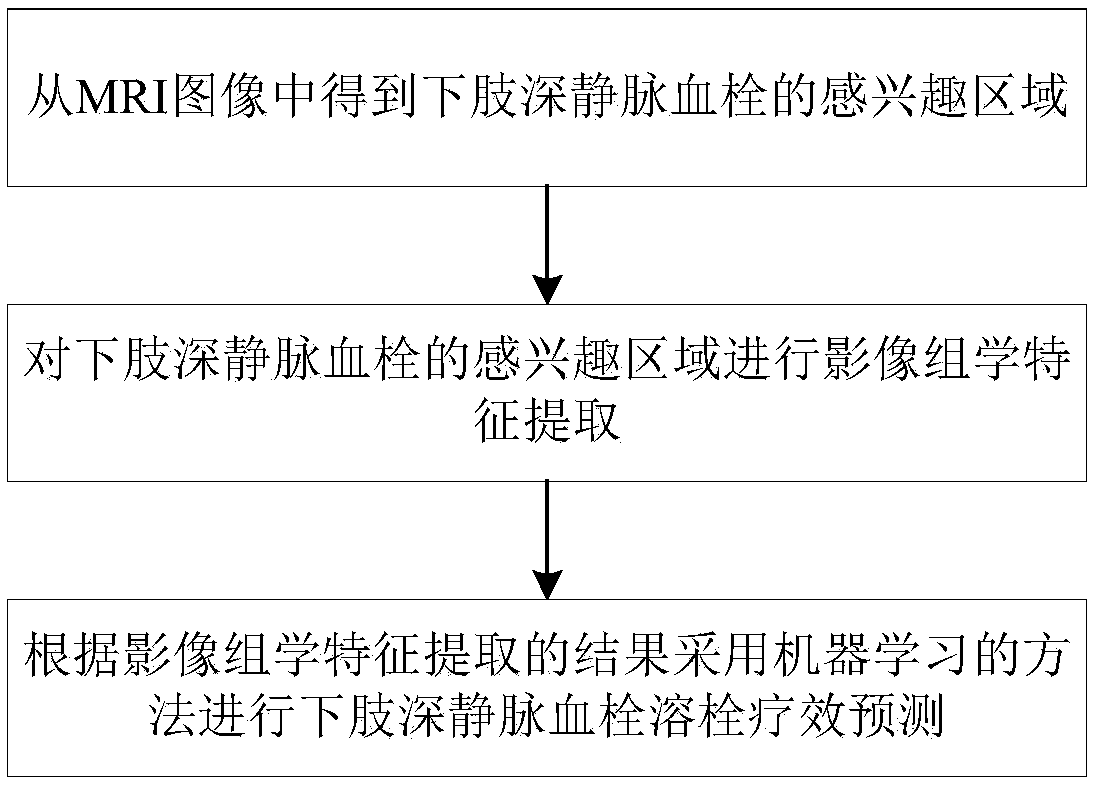A lower limb deep venous thrombosis thrombolysis curative effect prediction method and system based on machine learning
A deep vein thrombosis and machine learning technology, applied in the field of medical image processing, can solve the problems of time-consuming manual image reading, failure to meet clinical needs, and uneven diagnostic results
- Summary
- Abstract
- Description
- Claims
- Application Information
AI Technical Summary
Problems solved by technology
Method used
Image
Examples
Embodiment Construction
[0050] refer to figure 1 , the present invention is based on machine learning deep vein thrombosis thrombolytic effect prediction method, comprising the following steps:
[0051] Obtain regions of interest for lower extremity deep vein thrombosis from MRI images;
[0052] Carry out radiomics feature extraction on the region of interest of deep venous thrombosis in the lower extremities;
[0053] According to the results of radiomics feature extraction, the machine learning method was used to predict the efficacy of thrombolysis in deep vein thrombosis of lower extremities.
[0054] Specifically, the main purpose of the present invention is to construct a model that can realize accurate prediction of thrombolytic efficacy, and the method for realizing this model is to use machine learning technology. Machine learning refers to pre-obtaining (such as obtained through clinical records) the characteristics and labels of some data (that is, training sample data), and then using the...
PUM
 Login to View More
Login to View More Abstract
Description
Claims
Application Information
 Login to View More
Login to View More - R&D
- Intellectual Property
- Life Sciences
- Materials
- Tech Scout
- Unparalleled Data Quality
- Higher Quality Content
- 60% Fewer Hallucinations
Browse by: Latest US Patents, China's latest patents, Technical Efficacy Thesaurus, Application Domain, Technology Topic, Popular Technical Reports.
© 2025 PatSnap. All rights reserved.Legal|Privacy policy|Modern Slavery Act Transparency Statement|Sitemap|About US| Contact US: help@patsnap.com



